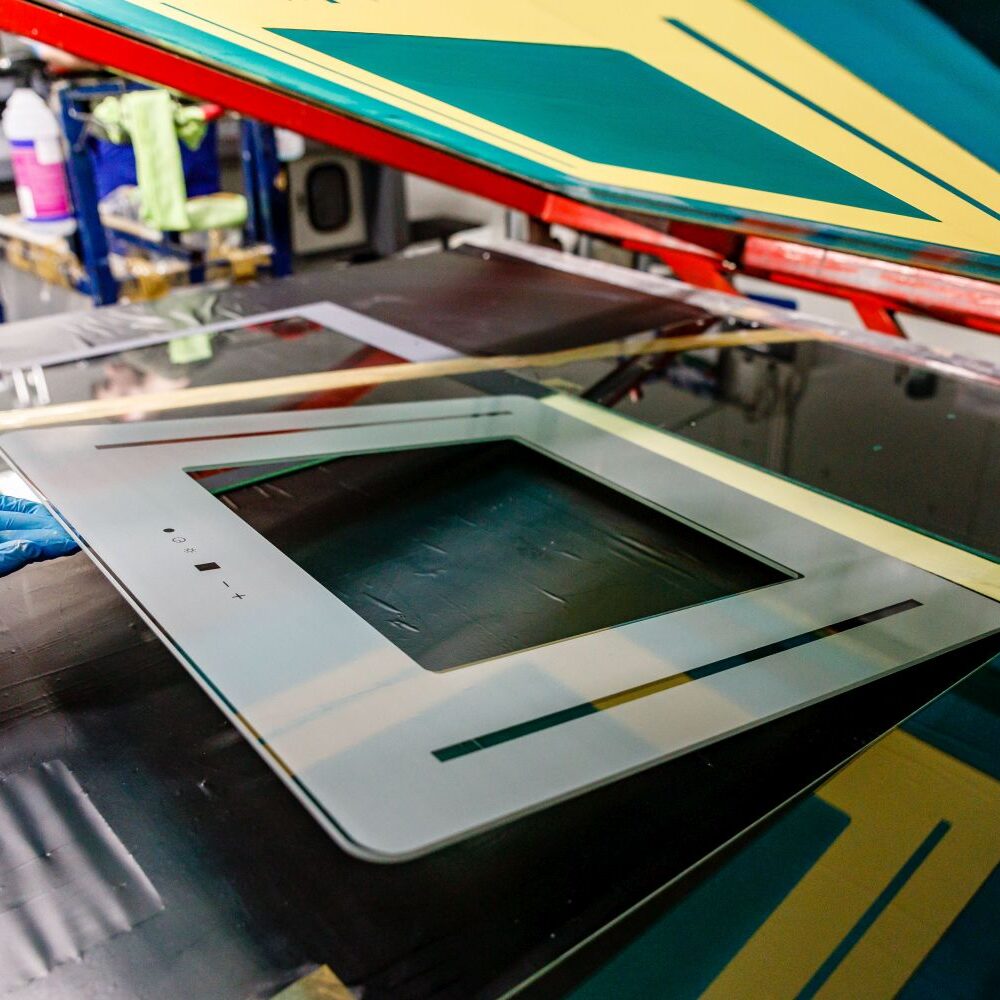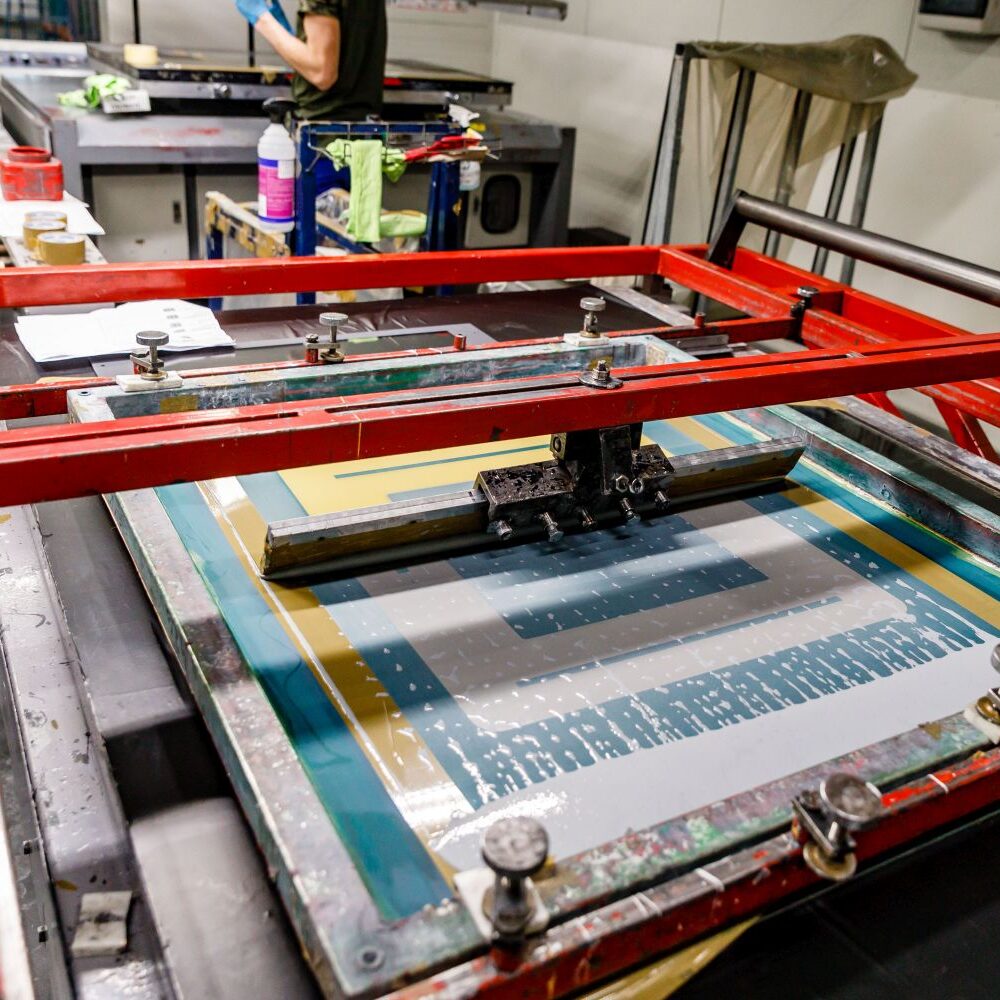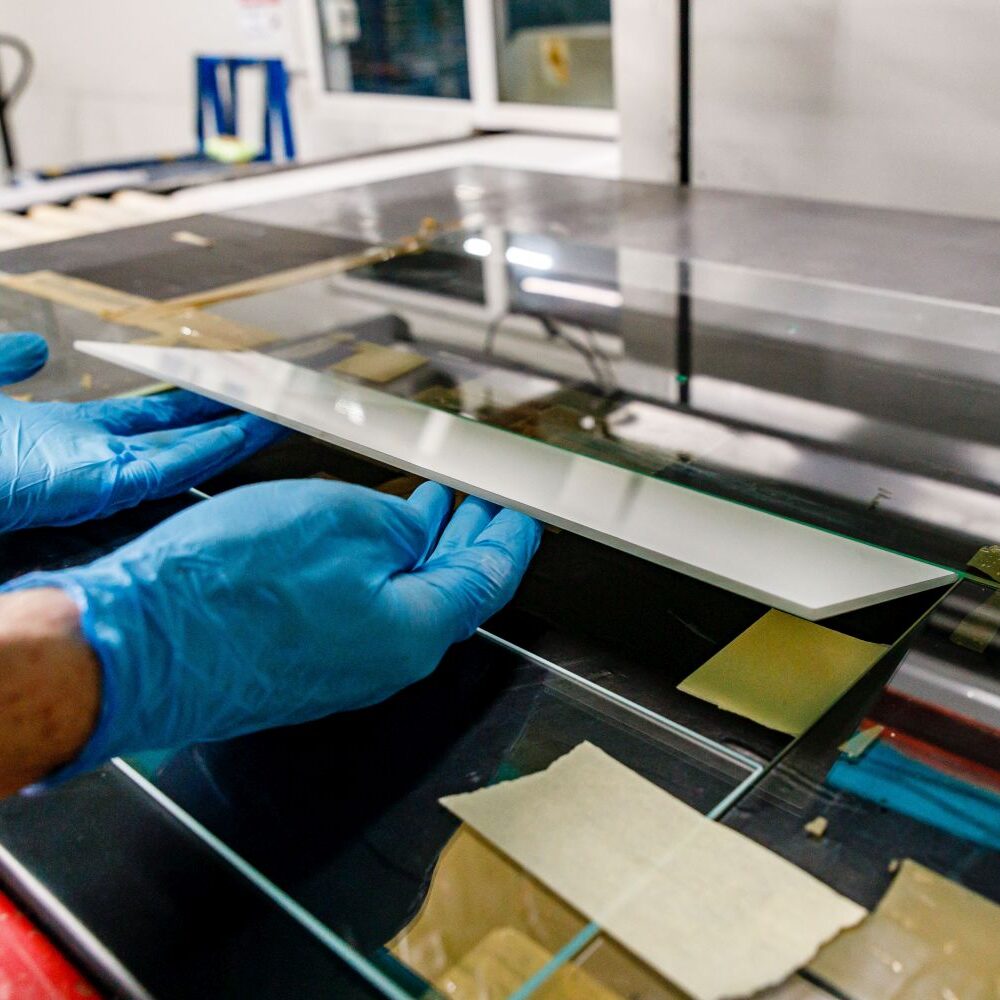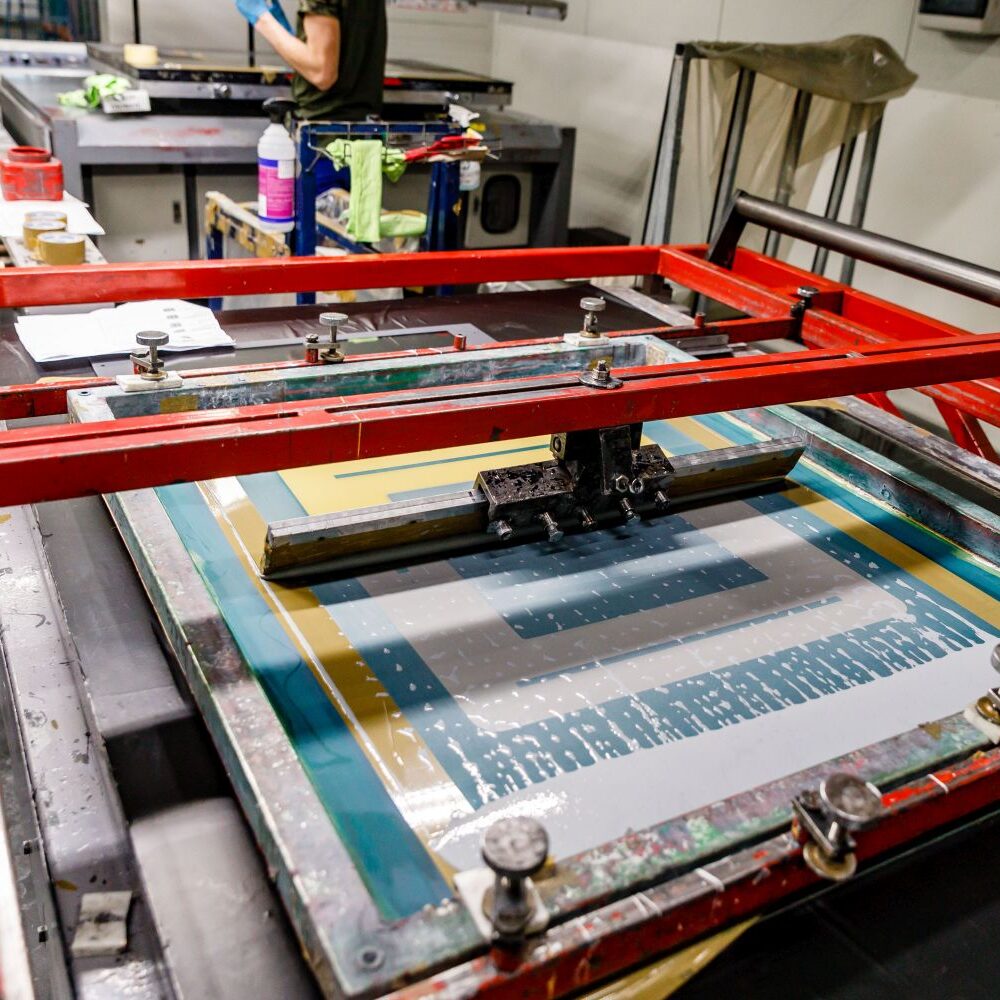Glass painting
Glass has always had two important functions, utility and decorative. Painted glass is an extraordinary decoration that more and more often finds favor with both architects and people interested in interior design. We paint glass using two, the most popular and reliable techniques:painting with rollers (roller painting) – the form to be covered with paint is placed in a specially constructed machine – roller coater, which precisely covers the surface of the glass with paint. The form is placed between the rollers covered with paint, which, by pressing their surface against the surface of the glass pane, transfer the paint to it. This method works best in the case of full-surface glass painting.
- print format (min.): 40 x 270 mm
- print format (max.): 1150 x 2600 mm
- printed glass thickness: 3 – 12 mm
- print format (min.): 40 x 270 mm
- print format (max.): 800 x 2000 mm
- printed glass thickness: 3 – 12 mm
water-soluble varnishes and chemically hardened paints – used for varnishing glass. After the glass painting process has been carried out, with this type of paint, we can further process it, such as grinding or cutting.
mineral ceramic paints – in other words, the so-called enamel enamel used for enamelling glass. Glaze enamel consists of a glass base composed of fine glass dust and a pigment of a selected color. The advantage of this type of paint is the fact that the glass enamel melts into the glass during the tempering process, which makes the color obtained in this way durable and resistant to scratches or chemical compounds.






